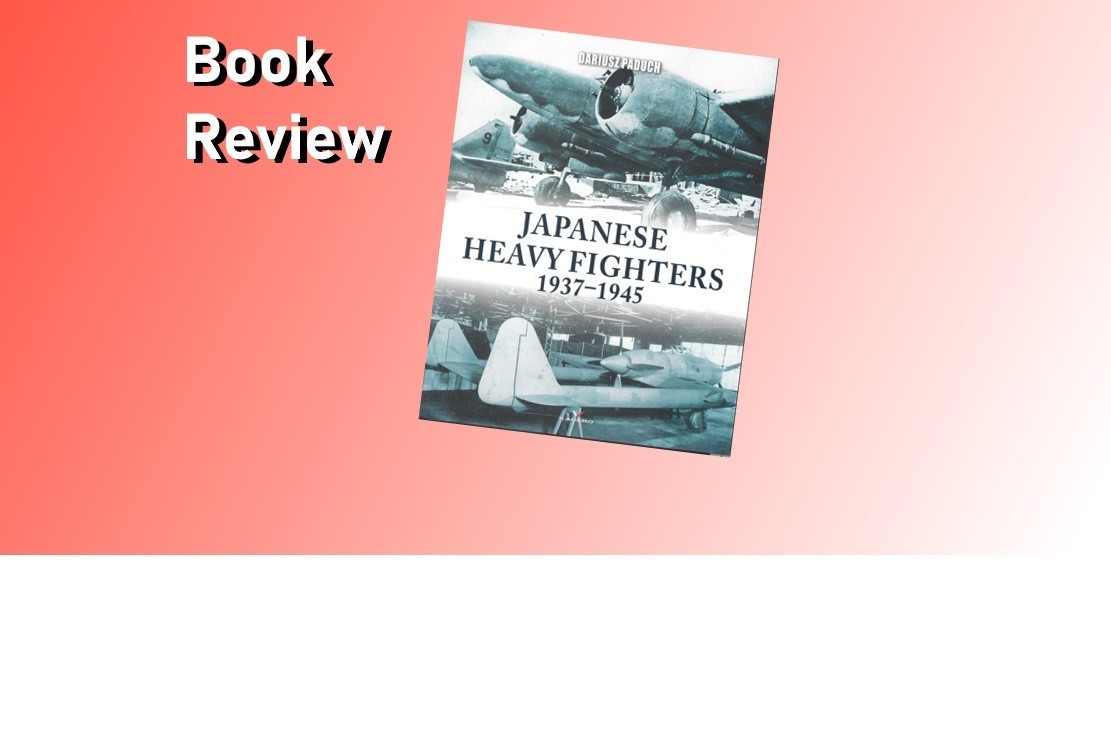
Introduction
Japanese Heavy Fighters 1937-1945 is a 240-page book from Kagero, part of their series Connoisseur's Books. Authored by Dariusz Paduch, the book is catalogued with ISBN 9788366673892. You can view the book on the Casemate Publishers US site, here.
The publisher writes;
The choice of Japanese planes touched in this book is certainly controversial, but it allows you to recall many little-known, though very interesting, designs.
Content
Japanese Heavy Fighters 1937-1945 is told through 240 pages organized into three chapters with 36 aircraft, two sub-chapters of aircraft weapons, and an index of names and abbreviations:
I. Heavy fighters of the Imperial Japanese Army Air Service
II. Heavy fighters of the Imperial Japanese Naval Air Service
III. Japanese aircraft weapons
Aircraft examined are the:
Kawasaki Ki-45 Toryu (Nick)
Kawasaki Ki - 96
Kawasaki Ki-102 (Randy)
Kawasaki Ki-108
Mitsubishi Ki-83
Rikugun Ki-93
Tachikawa Ki-94
Nakajima Ki-87
Kawasaki Ki-64 (Rob)
Mitsubishi Ki-73 (Steve)
MansyU (Manshu) Ki-98
Kawasaki Ki-119
Nakajima Ki-201 Karyu
Nakajima Ki-58
Mitsubishi Ki-109
Unrealised designs of heavy fighters based on the Mitsubishi Ki-67 Hiryu (Peggy)
Kawasaki Ki-81 (Ki-48 II a Kai)
Fighter versions of the Mitsubishi Ki-46
Kawasaki Ki-88
NakajimaJ1N Gekko (Irving)
Aichi SlA Denko
NakajimaJ5N Tenrai
Mitsubishi A7M Reppu (Sam)
Mitsubishi A8M Rifuku
Kyushu J7W Shinden
Mitsubishi J4M Senden (Luke)
Mitsubishi G3M2 Model 22 (Nell)
Mitsubishi G6Ml (Betty)
Kugisho Pi Y2-S Kyokko
Nakajima C6Nl-S Saiun (Myrt)
Kugisho D4Y2-S Suisei (Judy)
Conceptual fighters, or the great disinformation
Kogiken Plan
Japanese aircraft machine guns
Japanese aircraft autocannons
Index of names and abbreviations
Bibliography
After a short Author’s Note concerning Japan’s underappreciated aircraft development, the book opens with the Kawasaki Ki-45 Toryu “Nick”. The narrative of this aircraft sets the pattern for two main subjects, discussing, when known:
- Creation
- Operational and combat histories
- Theories and requirements that influenced the design
- Foreign peer comparisions
- Companies which participated and entered designs/prototypes
- Individuals with significant participation with the design
- Bureaucratic designations and management
- Testing and evaluation successes and failures
- Construction dates and serial numbers
Operations
- General description of layout and appearance
- Delivery to the field and unit assignments
- Technical specifications
- Equipment and components
- Armament
- Japanese and allied pilot assessments
- Combat performance and development.
The text presents the reader with trivia such as a look inside the machinations of Japan’s aircraft ministry, the Koku Hombu. The back cover explains the difference between Japanese and Western classifying of fighters as heavy or light. The text is light about introductory backstory narratives and yet most aircraft are thoroughly described.
Photographs, Artwork and Graphics
In addition to the text, most aircraft are detailed graphically with information tables, and most are illustrated with line art of the subject with up to three views: profile; planform; head-on. Curiously, the popular J7W Shinden is not illustrated. Nor are gunship variants of the standard Japanese bombers. Why, perhaps because if you are interested in this book then you are probably already familiar with shape of those aircraft?
Photographs
A fascinating gallery of photographs (all black-and-white) enhance the text, many from the author’s collection. Depending on why you want this book, some are incredible. We find a high quality image of a wooden mock-up of the Ki-45; Allied groundcrewmen running up an opened up aircraft presenting an excellent look at the armament; the rear fuselage of a J7W open revealing its large engine.
In addition to the line art illustrations, the book also features eight color profiles:
- Yokosuka D4Y2-S of petty officer Yoshimitsu Naka, Atsugi, Japan
- Mitsubishi Ki-83
- Nakajima J1N1-C-Kai Gekko, 251st Kokutai, Rabaul 1943
- Nakajima J1N1- Sa Gekko, Atsugi, Japan
- Kawasaki Ki-45 Kai, 13th Sentai, Cape Gloucester, 1944
- Kawasaki Ki-45 Kai Hei, 4th Sentai, 3rd Chutai, Japan
- Kawasaki Ki-45 Kai Hei, 53rd Sentai, 3rd Chutai, Shenten Seiku Tai special ramming unit, Japan 1945
- Kawasaki Ki-45 Kai Hei, 5th Sentai, Japan 1945.
Tables
Thirty-five aircraft data tables and 21 tables for machine guns and cannon present technical characteristics in an easily digested format. Each aircraft table presents much the same information as the two following examples, although some have a bit more or less.
Table 1. Basic tactical-technical characteristics of the Kawasaki Ki-45 Kai Hei
- Wingspan
- Height
- Length
- Wing surface (area)
- Weights (empty and normal takeoff)
- Engine type
- Engine power
- Maximum speed
- Cruising speed
- Practical range
- Maximum rate of climb
- Practical ceiling
- Crew
- Armament
Table 2. Variants of the Kawasaki Ki-45 Toryu: 11 Variants including prototypes with notes, i.e., “Field modification of the serial Ki-45 Kai Kos. Instead of nose machine guns, they installed…”
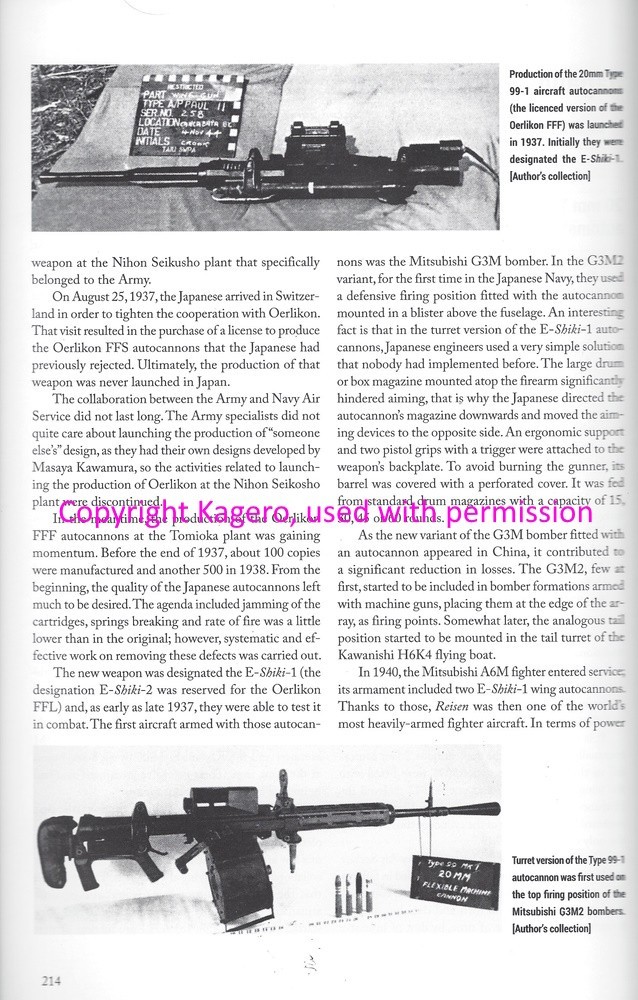
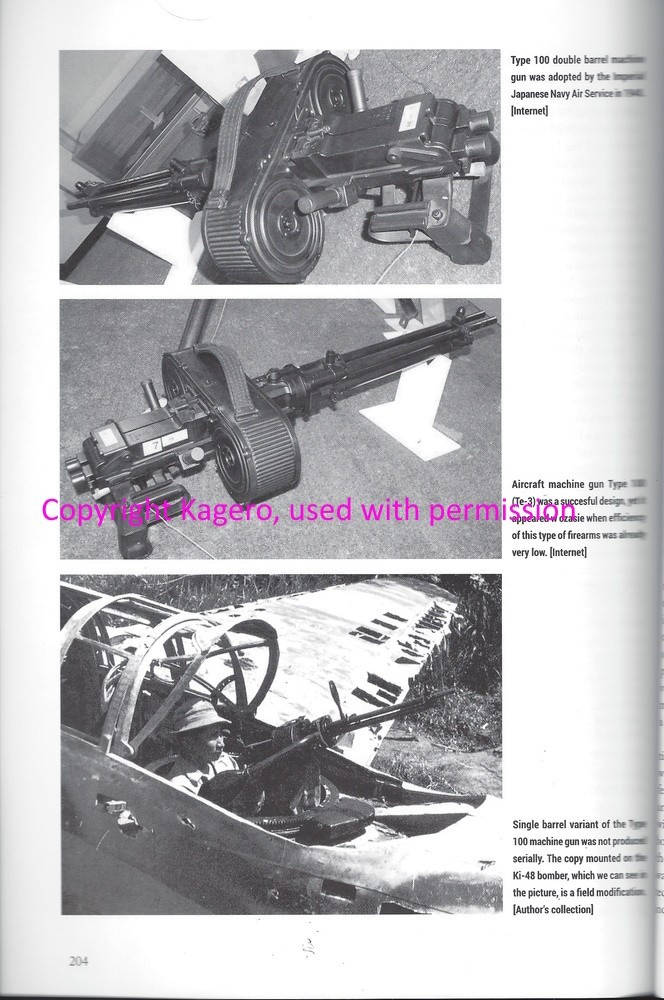
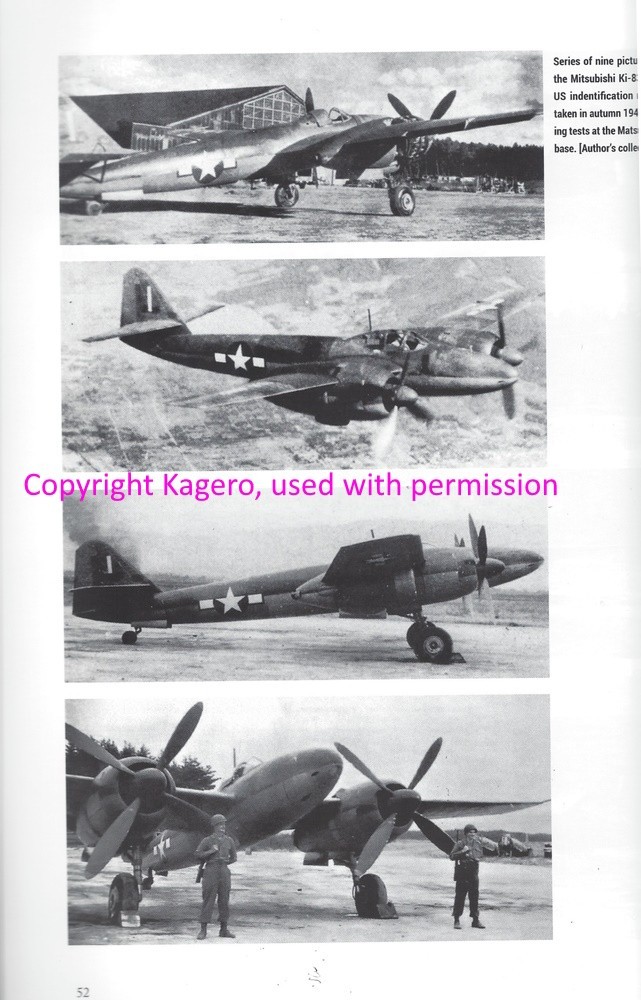
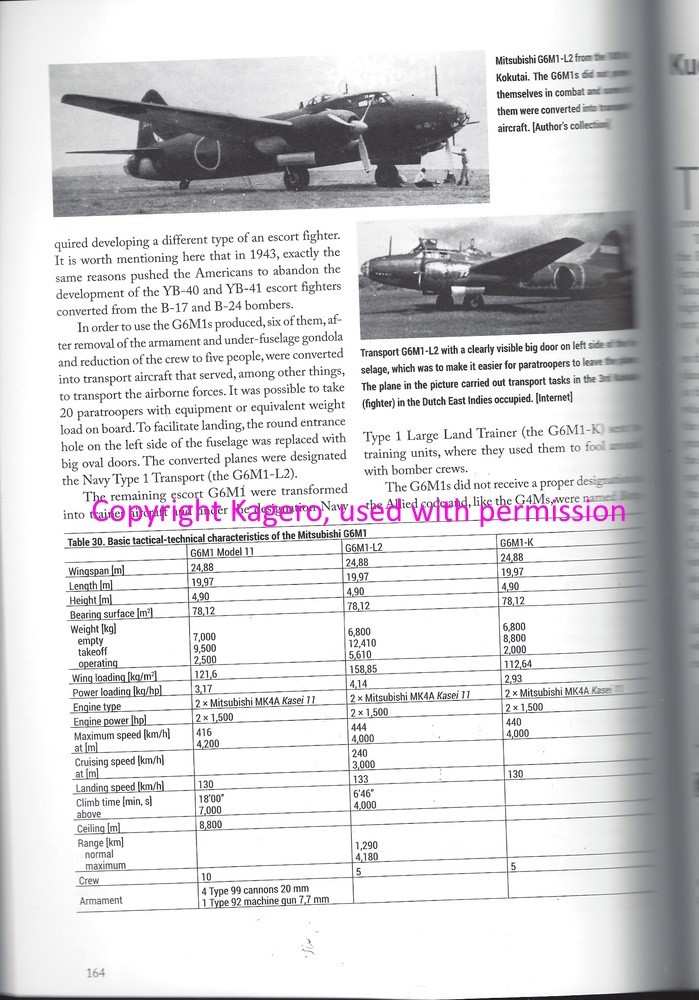
Conclusion
Kagero has published a marvelous resource for artists and modelers with Japanese Heavy Fighters 1937-45. I find it to be an excellent resource for Second World War Japanese research and development. Unfortunately, many of the photos are dark and some are blurry, not surprising considering the sources and methods of collecting the images. I appreciate the tables are color artwork.
Please remember to mention to Casemate Publishing and retailers that you saw this product here - on Aeroscale.











